Description of the cabbage variety Gift, features of cultivation and care
Cabbage is a vegetable crop, which is cultivated by almost all owners of summer cottages. Gardeners really like it because of its unpretentious care and pleasant taste. Among the late varieties, the Gift cabbage is more popular. Further, the detailed characteristics of this variety, planting rules and recommendations for plant care are presented.
Description of the variety
Cabbage Gift was bred in 1961 and is still in demand among gardeners for its high consumer properties. This is an old variety of Russian selection. It has few shortcomings, but there are plenty of useful properties (unpretentiousness, resistance to diseases, pests and frosts).
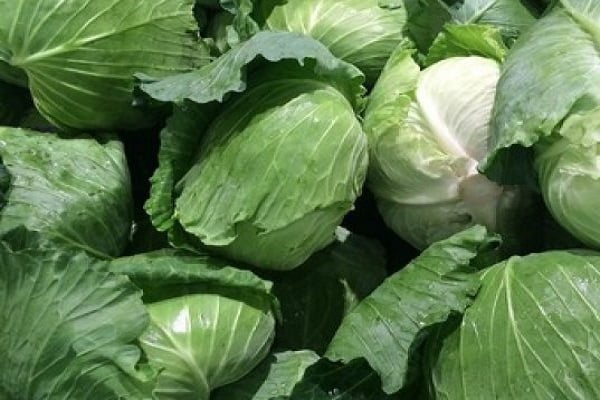
A successful harvest can be achieved when planting in clay and loamy soils, since with increased acidity the crop will not be yielded. Good lighting is required throughout the day and shading can affect the quality and quantity of the crop. Cabbage Gift belongs to the middle late varieties (ripening period - 4.5 months).
The description of the variety is as follows:
- Heads of cabbage are dense, round, large, weighing about 5 kilograms, gray-green in color, white in cross-section.
- The diameter of the rosette is about 1 meter, rather large, leaves with a waxy coating, spreading and raised, wavy along the edge. The outer ones are gray-green.
Also, cabbage contains vitamin C, potassium, phosphorus, calcium, sulfur, fiber, lactose, as well as vitamins A, B1, B6, C, K, P and U, which cures stomach and duodenal ulcers. It helps with heart diseases, cleans the walls of blood vessels.
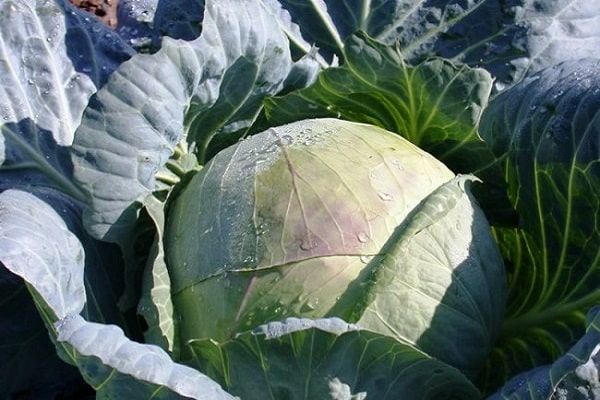
Growing
Breeding cabbage is very effective through seedlings. It is usually sown in April-May. In this case, the soil plays an important role, since the yield of cabbage depends on the microelements contained in it. It should be predominantly peat (75%).
Sow seeds according to the 5x5 scheme, to a depth of 1.5 centimeters into the ground. The room temperature should be no more than 18 degrees. The first shoots appear, as a rule, in a week, and when 4–5 leaves grow on the seedlings, the plant is ready for transplanting into open ground. This should be done in late May - early June.
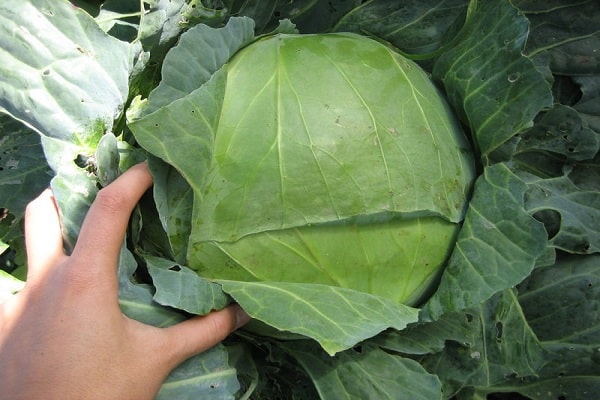
It is best to plant your cabbage on the land where legumes, cucumbers or potatoes were grown last year. The soil after them is rich in nitrogen, which is considered an excellent option for growing this vegetable.
You cannot plant plants close to each other, ideally at a distance of 60 centimeters. It is necessary to regularly water, weed and loosen the soil. And, of course, it's important to fertilize it. By following these simple rules, you can achieve a good harvest.
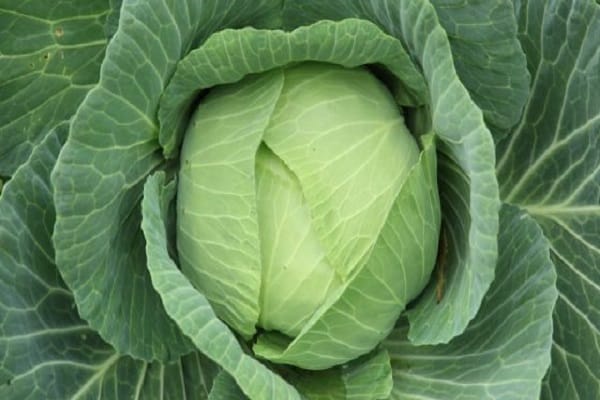
Care features
Cabbage care The gift is quite simple. Here, the main requirements are considered timely watering, fertilization and protection from pests.
At the stage of heading formation, watering should be provided at least 2 times a week. Also, cabbage requires hilling every 2-3 weeks and loosening the soil. Typically, the plant is fertilized three times during the growing period. Urea or manure are well suited as fertilizers; some gardeners fertilize with nitrogen in the first stage, complex fertilizer in the second, and potassium in the third.
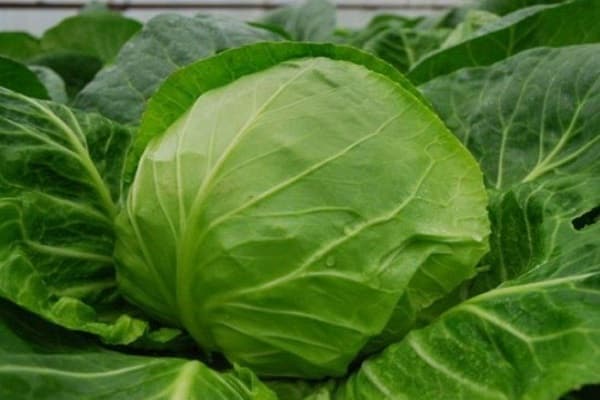
The fruits ripen 125 days after planting, they are harvested in September-October, without allowing the plants to stretch out. Then a good harvest will not be long in coming, you can collect up to 10 kilograms per square meter.
Advantages and disadvantages
Cabbage Gift has practically no drawbacks, except that it requires good lighting (does not tolerate shade at all) and abundant watering. Among its most beneficial advantages are the following:

- the possibility of growing in any climatic zone of Russia;
- high fertility and productivity of this variety;
- cabbage Gift is well stored, while not losing its taste;
- well suited for canning and fermentation;
- rarely exposed to diseases;
- resistant to frost.
Pests and diseases
Cabbage Gift is disease resistant. If tomatoes, garlic and onions grow next to her, then diseases characteristic of plants are not at all afraid of her. Pests can do more harm to cabbage. But you can also fight them using folk methods. Let's take a closer look at the most common insect pests and how to get rid of them:
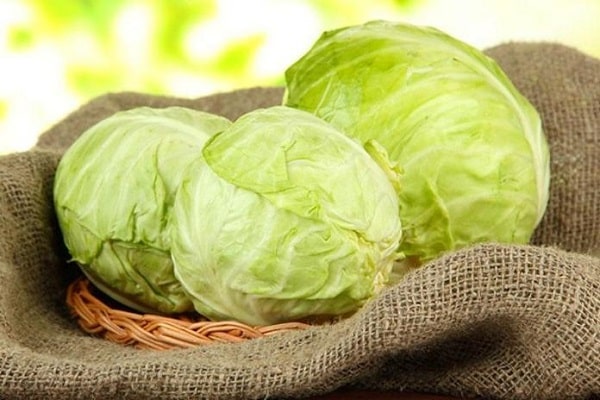
- Aphids are considered the most dangerous for cabbage. If she damaged the plant, the crop cannot be saved. Therefore, it is better to prevent the danger than to try to cope with it later. There are many control measures, including folk ones: soap solution, garlic infusion.
- Cruciferous fleas gnaw through the leaves, as a result, the cabbage withers and dries up. You can fight them by weeding the weeds in a timely manner.
- The cabbage fly eats the roots of the plant. To combat it, ash, pepper or tobacco are used, adding them through loosening the soil.
- Snails and slugs eat roots and leaves. You can exterminate them by spreading toads in the country, they are happy to eat these pests. Also, the beds are sprinkled with crushed shells, lime and ash. These activities will get rid of insects.
- The coleworm is a butterfly that is active mostly at night. She lays larvae on most garden crops. The scoop eats up the heads of cabbage and leaves its offspring in them. The best method of prevention is considered to be digging up the ground in the fall, and spraying with chemicals also has a good effect.

Harvesting and storage
Cabbage is harvested on the 125th day from the moment of the first shoots. September-October is the best time to collect it. It is better to start it on a cool, cloudy day at a temperature of 4-7 degrees. Heads of cabbage cut in this weather will last longer.
The cabbage is pulled out of the ground by the roots and the stump is cut with a knife, leaving 3-4 centimeters. After that, the heads of cabbage are sorted:
- looser ones are used for salting;
- dense are laid for storage.
Store in a basement on wooden shelves at a temperature of + 1–5 ° C. Air humidity should be 90–98%.
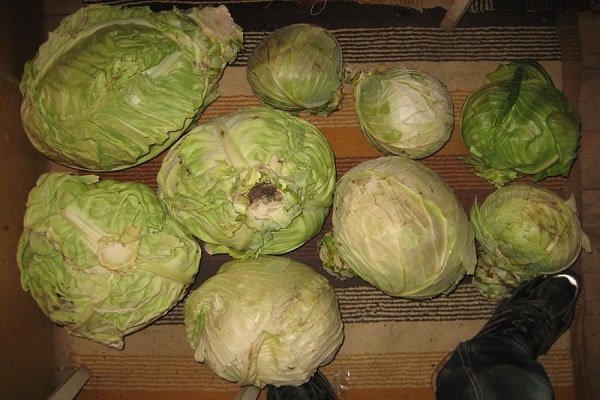
Gardeners reviews
Each product finds its supporters and opponents. Cabbage is no exception. Most of the reviews about the Gift are positive. They speak of it as an old reliable variety that is well stored and does not lose its taste until spring.
Delicious in salting, excellent stuffed cabbage rolls are obtained from it. There are no problems and difficulties in the growing process. However, it does not like droughts and is considered a favorite culture of butterflies and pests.
But some people also write negative reviews, for example, along with the Gift, the person grew another variety, and the Gift showed a much worse result than the analogue, and the pests caused significant damage to the crop. But perhaps this is a coincidence or the consequences of incorrect care of the culture. Basically, all gardeners recommend Gift cabbage for growing.
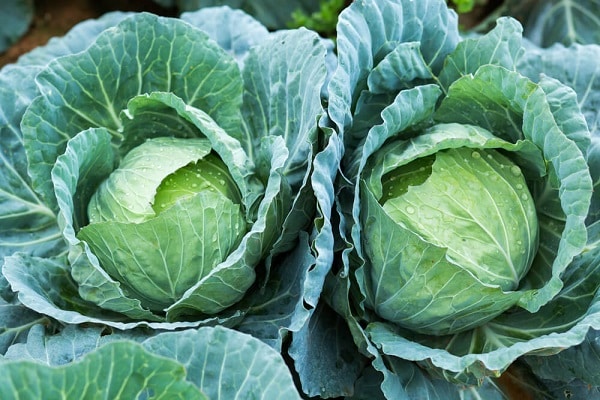





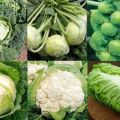
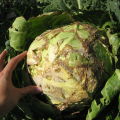

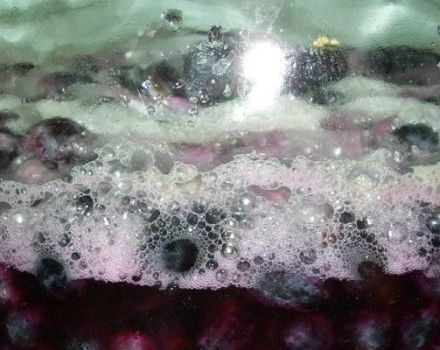

I fertilize this variety with urea, and sometimes with manure, if the neighbors have too much. Last year I tried to use the drug again BioGrow - according to impressions, the heads of cabbage grew larger. It's a pity, I didn't compare it by weight with the previous harvest. But it looks definitely more.